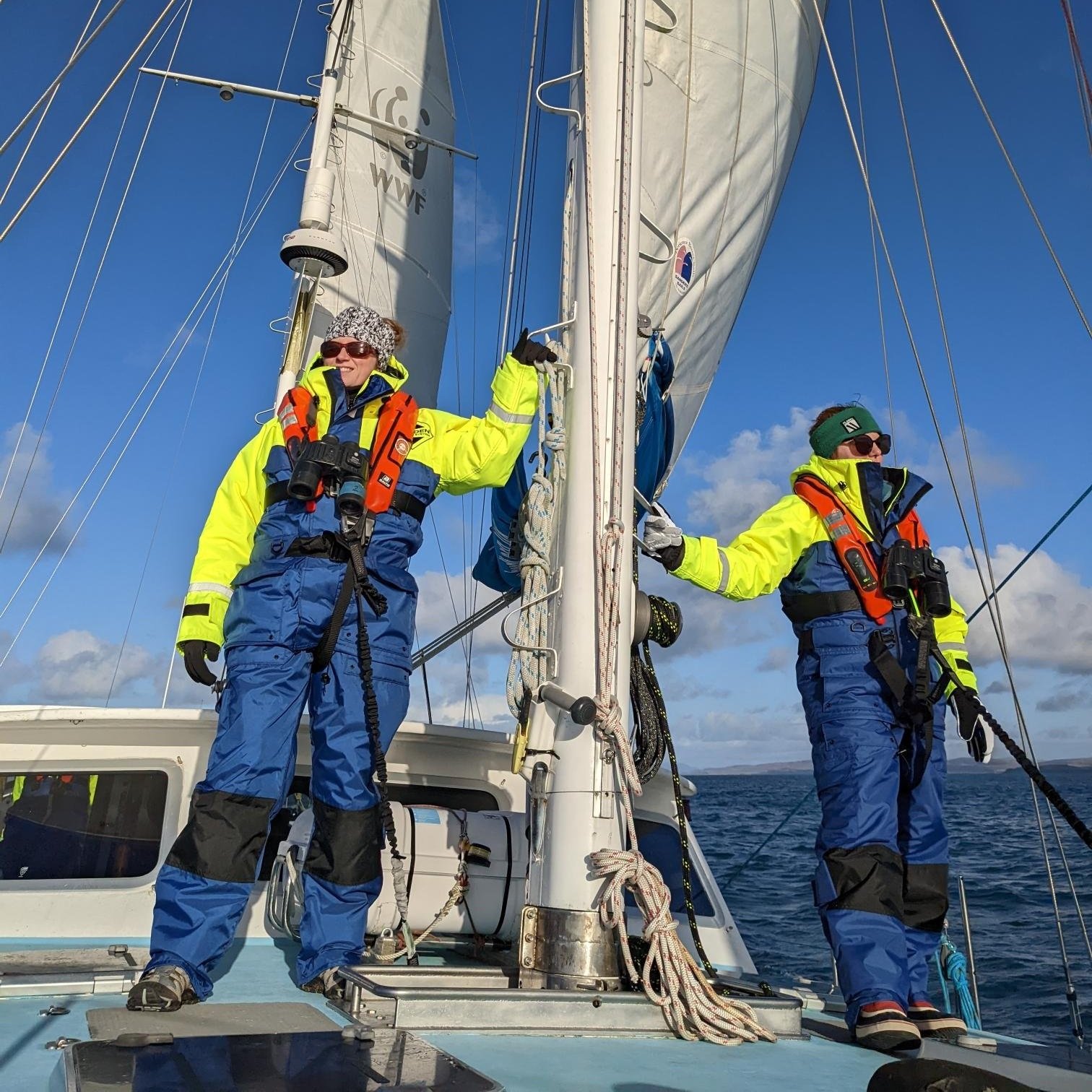Exciting Upgrades Boost Conservation
Silurian, our research vessel, is home to the fantastic citizen scientists who join a research expedition
Adventure beckons as the summer field season on board our research vessel, Silurian, kicks off this weekend. On Sunday, our first research expedition team of the season will be trained in visual and acoustic data collection techniques, before heading out into the field to conduct vital monitoring of Hebridean whales, dolphins, porpoises and basking sharks. But before we raise the anchor and set sail, we’d love to share some of the exciting developments we’ve made over the winter with support from the NatureScot Nature Restoration Fund.
EXPANDING ACOUSTIC CAPABILITIES
Monitoring the underwater soundscape is a key part of what we do on board Silurian. Noise plays a crucial role in the marine environment, vital for many aquatic species – particularly whales, dolphins and porpoises.
Our pioneering acoustic monitoring programme has been gathering data on underwater noise – both natural and anthropogenic – in Hebridean seas since 2002. Acoustic monitoring is a fantastic way to detect species, using their unique frequency of vocalisation to ‘count’ animals.
Our acoustic array was previously fitted with high frequency elements - perfect for detecting porpoises. We have now added mid frequency elements to a newly calibrated hydrophone array to extend our acoustic monitoring to include other priority marine species (i.e. delphinids and baleen whales).
This new acoustic system will also allow us to detect anthropogenic noise sources which emit lower frequency sounds allowing us to identify, assess and monitor the changing and emerging threats to cetaceans in the Hebrides.
A hydrophone - an underwater microphone which gathers acoustic data from the marine environment
SNAPS FOR SCIENCE
During a research expedition, when whales and dolphins are encountered photographs are taken of the individuals for analysis. Photo-identification (or Photo-ID) is non-intrusive research method, using images to identify individuals through unique markings or features on the animal’s body – particularly the dorsal fin.
This technique can be used to track individuals, examine social interactions, define range and quantify population numbers. It can also give an insight into site fidelity…are the same animals using the same areas year-on-year?
Photographs can also be used to provide valuable evidence to support conservation measures, such as monitoring scarring caused by entanglement, injuries from boat strikes and the prevalence of disease or parasites. The new kit - Canon EF 100-400mm USM lens and a Gopro Max – will allow us to take clearer images in more challenging conditions, strengthening the research work that can be undertaken using this technique.
Photo-identification is a research technique which can uncover a whole range of information
KEEPING OUR CITIZEN SCIENTISTS KITTED OUT
During research expeditions, our citizen scientists work incredibly hard gathering visual data by keeping watch for cetaceans from the mast. This means long hours in the temperamental Hebridean weather…it really can be all four seasons in one day here! To keep our team comfortable and cosy, we’ve invested in new kit – Fladen trousers and jackets when it’s chilly and Helly Hanson kit for when it’s a bit warmer.
New binoculars will also help our citizen scientists when scanning the seas for animals. New Marine PS II binoculars, Opticron’s highest level marine binoculars, provide enlarged porro, less edge distortion and a wider sweet spot, providing observers more opportunity to spot marine life, particularly in the periphery. They also perform well in low light conditions and have anti-reflective multi-coatings to maximise field of view. These attributes will make it much easier for our citizen scientists to spot animals and improve the quality of the data we collect.
After the past couple of challenging years on board, with acoustic-only monitoring work undertaken by our crew, we cannot wait to welcome people back on-board Silurian to resume full monitoring efforts. Silurian celebrates her 20th year monitoring Hebridean seas and with continued investment will be gathering data for many more to come.








